Barcelona, Catalonia, Spain 11/13
Arriving in Barcelona, we had three goals: Finding a safe parking place for The Turtle V, and revisiting both the Mercat (Market) de la Boqueria and the Basilica La Sagrada Familia.
Carefully following our GPS instructions, we spent a good half-hour wandering around in circles following one-way streets through the chaotic traffic until we finally found a parking lot that had room for large vehicles. It was just a few blocks from the Metro that brought us right to the city center. Strolling down the famous pedestrian boulevard La Rambla, we came to our first destination, the Boqueria Market. It was as colorful and varied as we remembered and we had fun taking pictures and tasting some local specialties.
Fortunately, the waiting line at the Basilica La Sagrada Família was pretty short but we highly recommend making reservations online to avoid a possible three-hour wait in the hot sun. Get an audio guide (it’s worth the price) and bring a second set of headphones that you can plug in for additional listeners.
While construction started in 1882, Catalan architect Antoni Gaudí took over the project a year later. After his death in 1926, things progressed slowly. Monika vividly remembers the building looking like a bombed out church when she visited in 1966 with her family. Obviously that was not the case. It was an enormous church in construction that was started decades earlier. Our last visit was in 1997. Since then, Pope Benedict XVI consecrated the basilica in front of over 56,000 people with a mass on November 7, 2010. Now, only 12 years away from the 100th anniversary of Gaudí’s death, construction is at full speed with paying visitors funding the project. The goal is to finish the church by 2016.
Luck brought us there on a sunny afternoon. The light reflections through the stain glass windows were beautiful and forever changing. Even more amazing was to realize that Gaudí had created this light show on purpose. Everywhere we turned we discovered something unique, often inspired by nature, and we can’t wait to see it when this amazing building is finished.
As we walked back to our home-on-the-road, an icy wind whipped dry leaves across the busy boulevard in front of the colorful 21st century Agbar tower. Fall was in the air.
To display more photos we are adding the photo gallery feature. Please click on the first thumbnail (which is not the entire picture) to enlarge it and then use the arrows below the photos to view others. Anytime you wish to return to the blog, just click on the photo. Captions will only display below the thumbnails.Mercat de Sant Josep de la Boqueria
- Tripe, tongue, heart, mountain oysters anyone?
- Ready for a snack?
Basílica i Temple Expiatori de la Sagrada Família
- Antoní Gaudí 1852-1926
- The first stone of the Basilica was layed in 1882.
- Towers and cranes reach into the sky.
- Gaudí loved nature. You’ll find surprises anywhere you turn.
- Hiking up the tower, we spotted this butterfly shaped window.
- Steeples are baskets of colorful fruit.
- Each steeple was crowned with a different kind of fruit basket: strawberries, grapes, olives, etc.
- Doesn’t this show a sense of humor?
- View towards the ocean from the tower.
- Taxi anyone?
- The tower needed a staircase. Why not make it a beautiful one?
- The light reflections this sunny afternoon were fascinating.
- The top round windows created shapes of butterflies on the ceiling.
- The light reflections were forever changing.
- Gaudí ingeniously incorporated images of trees for his main supports.
- The view from below creates the illusion that this Madonna is carried by angels.
- This golden cupola above the altar reaches to heaven. Gaudí loved to use symbolism in his designs.
- The cross seems to float in the air.
- A parting shot of the interior of the Basilica La Sagrada Familia.



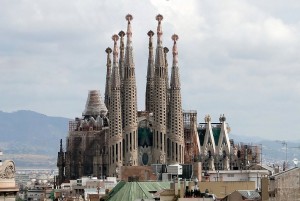
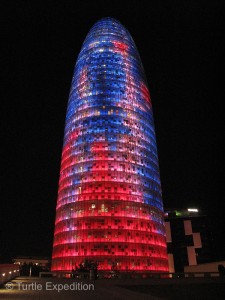
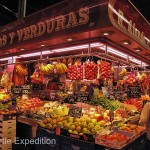
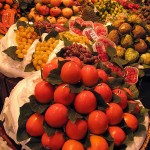
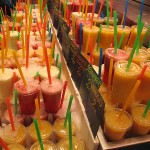
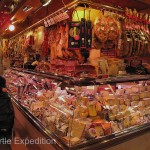
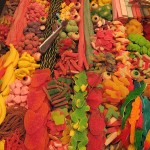
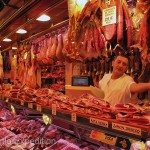
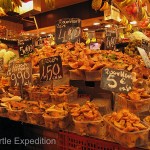
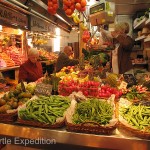
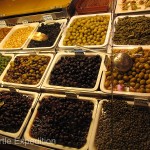
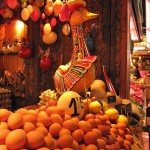
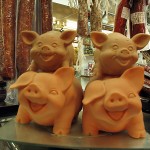
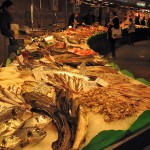
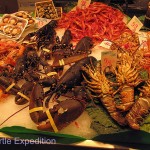
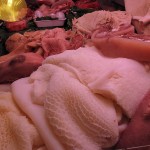
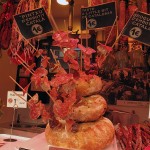
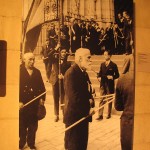
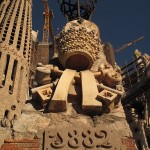
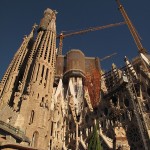
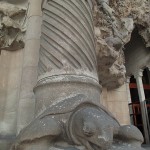
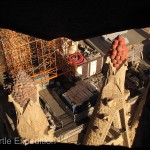
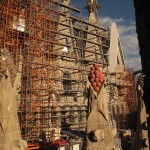
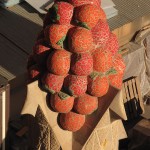
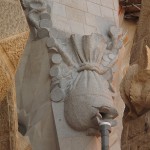
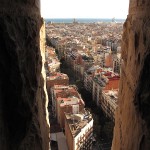
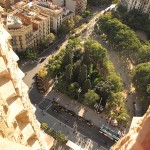
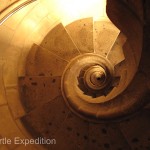
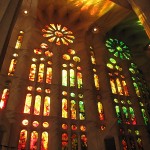
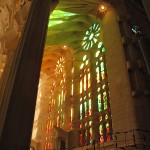
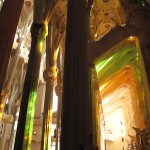
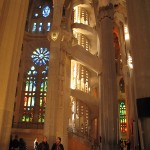
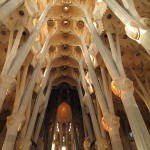
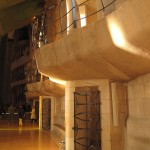
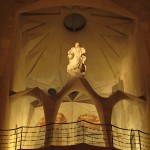
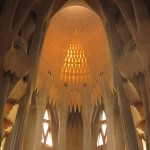
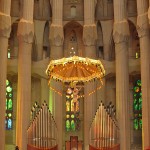
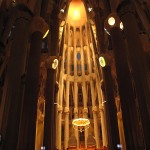




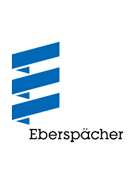
Leave a Comment